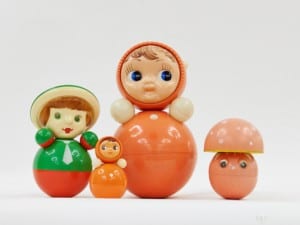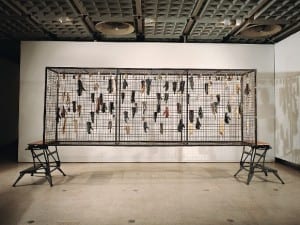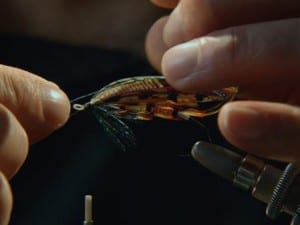Danny Moynihan has seen and experienced all that the contemporary art world has to offer. His acclaimed novel, Boogie Woogie, documents the inner workings of the art world from the extreme to the extravagant in a fast-paced narrative. Moynihan has also written the screenplay for Boogie Woogie, which is now a major motion picture and was released in May 2009.
The art industry of the 1980s and 1990s in London and New York set the benchmark for the international scene. Danny Moynihan’s Boogie Woogie is a novel that captures its essence from the sublime to the utterly intriguing. Originally published in 2000 with Duck Editions, but recently re-published on Atlantic Books, the novel has been gaining momentum over the greater part of this decade, and in May 2009 will be released as a full-length feature film.
Boogie Woogie is a fast-paced satirical novel that dives into the dark excesses of the international art scene of the 1990s. The movement within the book has a constant beat. Driven by the pursuit of fame, fortune and the 20th century masterpiece, Boogie Woogie reveals the inner workings of these circles through ambition and borderline obsession, sex, money, and drugs. Even mega-star, Damien Hirst has said: “Art is about life; the art world is about money. Boogie Woogie is where the two collide.” With dealers, collectors, artists and everyone else in between determined to achieve recognition by their peers and public, there is a fine line between success and failure, as it rests on a knife-edge with some people doing whatever necessary to reach the top.
Moynihan is no stranger to the art world — he’s a veteran. He has spent the greater part of the past two decades between London and New York. He has curated shows for a number of artists, managed galleries and exhibited his own work. “I was a painter for a long time, showing in galleries through the 1980s and 1990s, but I was working on both sides; very early on I had a gallery with Paul Kasmin (who has a gallery now in New York) and Jasper Morrison, the acclaimed furniture designer. We were 20 years old; we were young artists and exhibited with other young artists. I went back to painting after working in New York at the Robert Miller Gallery, and then I sort of gave up; I stopped painting and I started writing. In 1994, I wrote a libretto for an opera called, Agongo, by then I met Damien (Hirst). He created the installation, I produced and wrote the libretto, and we performed this at the Edinburgh Festival.”
Boogie Woogie has experienced an impetus since it first graced our shelves back in 2000 with Moynihan taking up the role as screenwriter for the film. “I transformed the script from New York to London, so some of the characters are English instead of American, but they are still the same sort of personalities. For example, Dewey (Alan Cumming) is a Scottish guy, Mr Rhinegold (Christopher Lee) is still an old German collector, so his character hasn’t changed. Mrs Rhinegold (Joanna Lumley) is a well-to-do Englishwoman instead of being American, and Art Spindle (Danny Huston) is still American.”
The international arts scene is not an overly explored theme in literature or films, so it creates an engaging read that seems at times hard to grasp, but after attending some well-known openings, it can be said that some of the characters do mimic real personalities. It’s strangely familiar: “There were two moments in New York that stood out for me. Between 1983 and1986, I was working with Robert Miller in his gallery, and I was in with that world — nightclubs, parties and being in the gallery and working with dealers, some of the biggest in the world at the time. I had a close up view of how things were done. The second influence was another stint in New York 1992-1993, when I lived with Damian. He wasn’t well known at the time, and so we were there at the beginning with all these people that are now household names.”
What defines an era? When has enough time passed to look back and analyse its idiosyncrasies? Boogie Woogie takes an interesting approach, the book is realised through a variety of characters from Elaine the extreme video artist who exploits her lovers, to Bob Maclestone the sleazy art dealer, and to Beth the wannabe gallerist. “I felt that it was a subject that has never really been touched upon in film. It has vaguely, but it has never been tackled. I was like a dog with a bone on this one.”
Making the transition from artist to novelist was effortless for Moynihan. It appears as if this could be daunting, although both disciplines are codified as art, creativity is explored in different ways. “There are writers who are literary and writers who are visual. I obviously fall into the latter, but I think that if you have a fairly good command of the English language, much of it comes out naturally, definitely with the dialogue.”
The dialogue in Boogie Woogie is compelling, although fiction, it is very real. As the characters interact with each other and the story unfolds, a visual image emerges through the use of the colloquial. “I think looking back on it; I had a good ear for this, having been an artist, bought things and sold them, collected and curated. Knowing all these people in the art world. I had a direct feeling for this. It wasn’t something that I made up. This continues in the film, and when I started the process of making a film, I needed a director that understood the art world, which is why I picked Duncan Ward. He knew some of the characters that I knew, and I felt he would do something that was a parody of something that is already a parody.”
The structure of Boogie Woogie makes it an appealing read. It’s very fast and the characters’ individual stories weave together a narrative of an era that was defined by extremes and excesses. As their stories collide the result is a delicious narrative that assigns a gritty sub-world behind the glitz, glam and parties. “I wanted to make a structure that was very ordered. In the book it takes place over the period of a year, and every chapter is halved in time, but you can’t really translate that order into film, so it had to be transformed, sort of put into a three act film, something that would follow the film narrative.”
In the tradition of William S. Burroughs’s Naked Lunch, Moynihan wrote the book and then physically cut and pasted it back together, weaving narratives and creating unexpected surprises. He says: “I basically cut out each section or character and I spent a long time sellotaping them together. The chapters were rolls of paper with reams everywhere. I gave myself a hell of a task, but that’s how I did it. I had in the back of my mind the two films The Player and Shortcuts where you had a series of stories intertwined with people linked together in some way all with their different narrative.”
The novel is a reflection of an era, but it is also touches the contemporary arts scene of today. “Art is probably the last unmonitored area that still exists today. In art you can still launder money, it’s a lifestyle and has a certain sense of freedom. In that sense Boogie Woogie is still fairly poignant, but on the other hand, art is much more commercial today. Artists are much more aware of the internationalism, for example, the fairs. I don’t mention the fairs in the book, because in those days there weren’t too many, the Chicago Art Fair was the most important one. Now there are fairs all over the world, it encompasses China, India, Russia and the Emirates. It’s much more international, artists will discuss having a show in Geneva, Moscow or Beijing, rather than Paris, New York or London. In 1993, there weren’t even that many galleries in London. It’s much more of an international industry with Gagosian having galleries in every country.”
Boogie Woogie is a book that anyone working in the arts should read. It has familiar moments of recognition as well as some graphic writing. It’s to the point and parodies an art world that did exist, continues to exist and will no doubt stretch further and faster than it does today. Boogie Woogie, the film, was on general release in May 2009.
Cherie Federico





